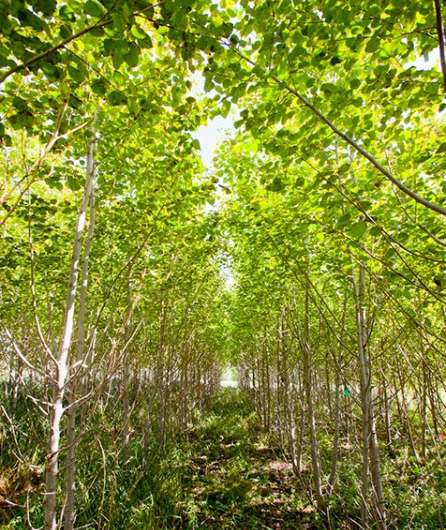Researchers identify genetic regulatory networks that influence poplar wood formation

To begin to understand the complex genetic interactions that control poplar growth, a potential bioenergy crop, researchers developed a robust high-throughput pipeline for studying the hierarchy of genetic regulation of wood formation using tissue-specific single cells known as protoplasts.
This approach will be particularly useful in studying complex processes in plant species that lack mutants and stable transformation systems. It also can be used to improve forest tree productivity with more precise genetic approaches.
Wood is an important renewable material for bioenergy and other industrial products, but its formation, a complex process regulated at many levels, is poorly understood. Such processes often involve interactions between regulatory genes known as transcription factors (TFs) and their direct DNA targets. These TF-DNA interactions constitute a regulatory hierarchy.
The new method for isolating protoplasts from the wood-forming stem differentiating xylem tissues of poplar was developed by researchers at North Carolina State University with funding from the U.S. Department of Energy Genomic Science program. The team used the method to study the expression of a specific poplar TF affecting wood formation. By integrating this novel system with computational approaches, a hierarchical layer of genes was inferred that was functionally validated in the wood-forming stem differentiating xylem. The new approach aids understanding hierarchical gene regulatory networks directed by TFs in poplar and other plant species where mutants are not available.
More information: "SND1 transcription factor–directed quantitative functional hierarchical genetic regulatory network in wood formation in Populus trichocarpa." Plant Cell 25, 4324-4341 (2013). DOI: 10.1105/tpc.113.117697
Journal information: Plant Cell
Provided by US Department of Energy

















